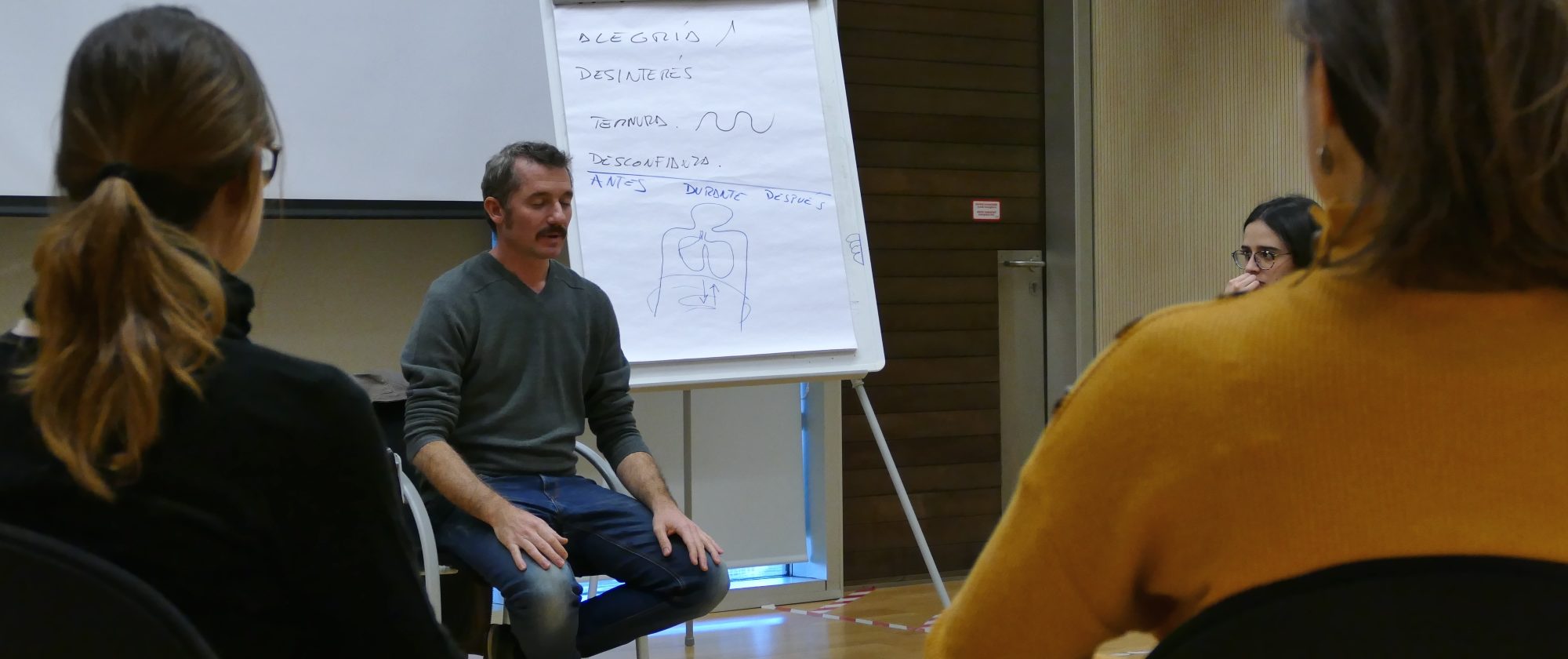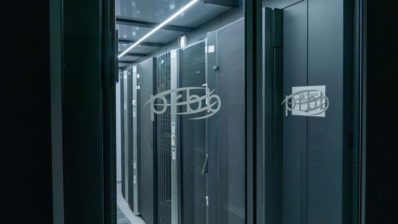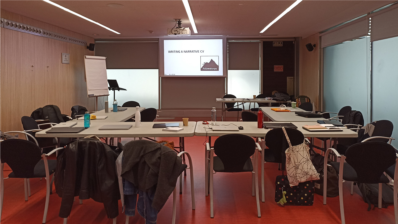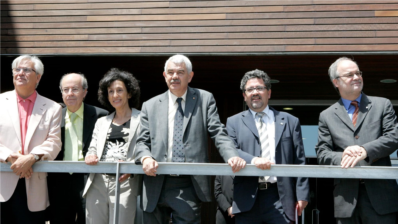If you are asked to compare a scientist with an actor, you will hardly find any similarity. However, they have more in common than you may imagine: both need to transmit a message to a target audience. For that reason, it is important that scientists, as well as actors, train their own expressive resources.
It has been 10 years since the PRBB Intervals kick-off, an interdisciplinary educational program that offers a wide variety of activities for everyone working at the Barcelona Biomedical Research Park (PRBB); from how to improve their leadership skills, to a better way to comunicate their project to the general public.
Last January 31, some PRBB residents participated in a 8-hour workshop called Técnicas actorales para la comunicación científica (Acting techniques for science communication), aimed at improving their communication skills. Since 2010, a total of 209 people have participated in this intensive course.
Fernando Gallego, a professional actor and gestalt therapist, is the trainer of this workshop. The actor provided the participants with tools to improve their communication skills.
The art of communication: beyond words
The day started with a short introduction in which Fernando explained the importance of combining the three types of communication: verbal, non-verbal and paraverbal. He made a special emphasis on the non-verbal and paraverbal communication because, quite often, the gestures and the way you transmit the message are more important than the message itself.
Then, it was time for the participants to introduce themselves; they were filmed as they did it, so later they could debate their strengths and weak points. In the next activity they worked on the paraverbal communication. The aim of this activity was to transmit the same information through different emotions (happiness, distrust, tenderness, disinterest…). In order to achieve that, the participants used different resources such as the tone of voice and the posture.
“There are three types of communication: verbal, non-verbal and paraverbal. Quite often, that the audience gets the message is due to the non-verbal and paraverbal types. That’s why, at the workshop, they work on some aspects such as gestures, voice tone, posture and breathing.”
Before lunch time, they read some texts. The goal of this reading aloud was to discover new ways to emphasize different parts of a text, since depending on the words you decide to highlight, you can change the intention of a message.
The importance of relaxation
The second part of the workshop started with a relaxation activity aimed at controlling one’s own breathing.
With their bodies relaxed, the participants shared the negative thoughts that come to their minds before and after giving a presentation. Externalizing those thoughts let them find some points in common and replace them with constructive criticism.
The latest activities before finishing the course were aimed at learning how to control different aspects of a speech, such as the distance between the public and us, the energy and the enthusiasm that accompany the message and how to grab the public’s attention.
Interviewing Fernando Gallego
What can you tell us about your experience of training scientists in this workshop?
It was great, as has always been with this course at the PRBB. I really enjoy the creativity that this community has. I believe it’s important to connect with the great desire of sharing what I perceive in them. Giving a good presentation, living up to everyone’s expectations… It always makes us feel anxious, especially if you are young or don’t have enough recognition yet. For me, this workshop is an opportunity to discover the people hiding behind a presentation or a microscope.
What is the main challenge one needs to face in order to become a good communicator?
Yourself! Obviously, there are external factors that can affect the person who is giving the presentation, but it is necessary to recongnise these factors and fight against them. The fear of criticism is something that affects us before, during and after the presentation. You have to keep it at bay.
The main challenge? Enjoying, connecting with the message you want to transmit, sharing what you actually know and, of course, getting rid of the fear of criticism. If you are on the stage it’s because you have a message that is worth explaining. The audience wants to listen to you. Then, why not see them as allies?
What three tips would you give to someone that needs to give a presentation?
The first one is not thinking that it will be perfect because you cannot understand perfection as something mathematical… it doesn’t exist. Then, it is necessary to lower the expectation and believe that, over time, you will do better.
The second one is pretty obvious: you need to prepare the presentation. However, it is important to practice it aloud, and not mentally; give the presentation to a friend, or even a wardrobe, but do it. A presentation is not something you can give mentally.
Finally, the third tip seems easy to achieve but it ends up being crucial: breathing. It is normal you feel nervous when giving a presentation but this can affect your breathing and, consequently, the functioning of your diaphragm. From that point, everything can get out of control. We lose volume, our voice tone becomes more acute, we can hardly vocalize… The solution is simple: breathe slowly!







